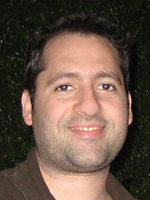sponsors
help promote

general information
Registration Fee: $400
Register Now
Thanks to generous sponsorship, early bird pricing is now permanent for SREcon15!
Venue:
Hyatt Regency Santa Clara
5101 Great America Pkwy
Santa Clara, CA 95054
Questions?
About SREcon?
About the Call for Participation?
About the Hotel/Registration?
About Sponsorship?
usenix conference policies
SREcon15 Program
Download the SRECon15 Attendee Lists (Conference Attendees only)
Attendee Files
(Registered attendees: Sign in to your USENIX account to download this file.)

 SREcon15 Attendee List
SREcon15 Attendee List
All sessions will take place at the Hyatt Regency Santa Clara.
Monday, March 16, 2015
| 7:30 am–5:00 pm | |
Registration and Badge PickupSanta Clara Ballroom Foyer |
|
| 8:30 am–9:00 am | |
Continental BreakfastMezzanine East/West |
|
| 9:00 am–10:00 am | |
|
|
|
| 10:00 am–10:30 am | |
Break with RefreshmentsMezzanine East/West |
|
| 10:30 am–11:25 am | ||
|
|
|
|
| 11:25 am–11:30 am | |
Short Break |
|
| 11:30 am–12:30 pm | ||
|
|
|
|
| 12:30 pm–1:30 pm | |
Conference LuncheonTerra Courtyard |
|
| 1:30 pm–2:30 pm | ||
|
|
|
|
| 2:30 pm–2:35 pm | |
Short Break |
|
| 2:35 pm–3:30 pm | ||
|
|
|
|
| 3:30 pm–4:00 pm | |
Break with RefreshmentsMezzanine East/West |
|
| 4:00 pm–5:00 pm | |
|
|
|
| 5:00 pm–6:30 pm | |
Happy Hour, Sponsored by GoogleMezzanine East/West |
|
Tuesday, March 17, 2015
| 7:30 am–5:00 pm | |
Registration and Badge PickupSanta Clara Ballroom Foyer |
|
| 8:30 am–9:00 am | |
Continental BreakfastMezzanine East/West |
|
| 9:00 am–10:00 am | |
|
|
|
| 10:00 am–10:30 am | |
Break with RefreshmentsMezzanine East/West |
|
| 10:30 am–11:25 am | |
|
|
|
| 11:25 am–11:30 am | |
Short Break |
|
| 11:30 am–12:30 pm | |
|
|
|
| 12:30 pm–1:30 pm | |
Conference LuncheonTerra Courtyard |
|
| 1:30 pm–2:30 pm | |
|
|
|
| 2:30 pm–2:35 pm | |
Short Break |
|
| 2:35 pm–3:30 pm | |
|
|
|
| 3:30 pm–4:00 pm | |
Break with RefreshmentsMezzanine East/West |
|
| 4:00 pm–5:30 pm | |
|
|
|


























connect with us